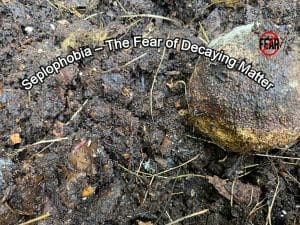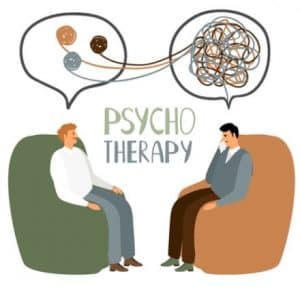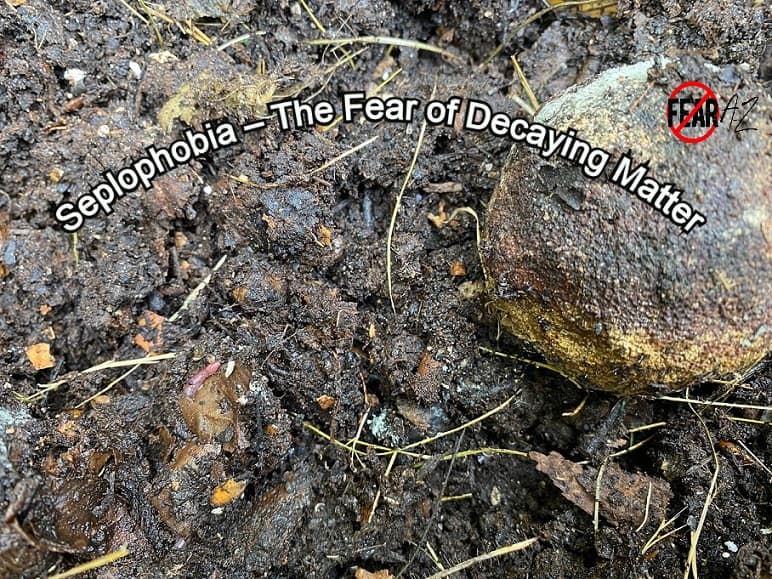Share This Article
The Fear of Decaying Matter Is Officially Called Seplophobia
Did you know glass bottles can last for a million years, while plastic bags and styrofoam cups can last forever? In contrast, it takes just five days to a month for kitchen scraps to decay completely. Does the thought of decaying matter such as this scare you?
Decay can be gross. Most people react with disgust and the gagging reflex upon seeing anything rotten. However, those with seplophobia have a more intense reaction: sheer terror.
Seplophobia may cause you to shake in panic when dealing with your fear of decaying matter. Are you asking yourself if it’s possible to master your fear of decaying matter? Read on to learn how to manage your thoughts and cope with this fear.

What Is Seplophobia?
Seplophobia is the fear of decaying matter. It’s derived from the Greek sep, meaning “decay,” and phobos meaning “fear.” Seplophobia is also called septophobia. Seplophobia is a specific phobia, so it’s a fear directed at a certain object or situation. Seplophobia may limit your daily life and affect your mental health.
Do you hate touching soil because it may contain decaying matter? Do you tremble at the mere thought of anything rotten? Perhaps you have a garden, but you don’t add compost because of your decay phobia. Your extreme anxiety may even lead to panic attacks.
The symptoms mentioned above are all hallmarks of seplophobia. No wonder seplophobics take extreme measures to ensure they are nowhere near decaying matter. They may persistently worry about future events that involve decaying matter. This is called anticipatory anxiety. The sufferer also goes into flight-or-fight mode when encountering decaying matter.
When they think about the past, they may have intense feelings of anger, guilt, sadness, and hurt. Seplophobia may cause a person to fear decaying matter so much that they resort to avoidance behaviors. In severe cases, they don’t only avoid situations or objects with the decaying matter but also the thoughts about it.
Even when a person is not physically in contact with decaying matter, the brain can react the way it would in a fearful situation. This is because fear is a physical response to our patterns of thinking, the thoughts we attach to decaying matter.
If you have seplophobia, you may show the following behaviors:
- Refusal to watch movies that show decaying matter
- Avoiding gardens and farms
- Do everything possible to avoid decaying matter
Every seplophobia sufferer is different. The images, videos, sounds, and words they associate with decaying matter are also different.
What Causes Seplophobia?
Seplophobia causes are the same as that of other specific phobias. At times, there may not be an apparent cause that generated the fear. But it’s largely one’s genetic predisposition to anxiety disorders and traumatic events that work in tandem to develop seplophobia.
Genetics
People who have a family history of anxiety disorders or specific phobias are more likely than others to develop phobias such as seplophobia. They have a genetic predisposition to it. However, this alone is rarely a reason for a full-blown phobia to develop. But if genetics is combined with a traumatic event, it can turn into a phobia quite easily.
Traumatic Events
Some people go through an emotionally charged event involving decaying matter. For example, kids can develop aversions towards decaying things because of the smell or texture. This is reinforced when a caregiver shouts “No! Don’t touch that!” when kids approach rotten food. Eventually, that aversion can develop into a phobia.
What Are the Symptoms of Seplophobia?
The severity of the symptoms of seplophobia depends on the underlying cause of the phobia, the individual, and the intensity of their fear. It can range from a mild uneasiness to panic attacks.
The closer you get to decaying matter, the more anxious you will get. Seplophobia symptoms are similar to that of other specific phobias.
Physical Symptoms
- Dizziness
- Shaking
- Heart palpitations
- Breathlessness
- Chest pain
- Sweating
- Nausea
- Stomach problems
- Numbness or tingling
- Hot or cold flashes
- Feeling unsteady
- Feeling of choking
Mental/Emotional Symptoms
- Obsessive thoughts
- Difficulty concentrating
- Flashes of negative images of decaying matter
- Fear of fainting
- Fear of losing control
- Withdrawal
- Anger
- Sadness
- Guilt
Self-Help Guide to Treating Seplophobia
When seplophobia interferes with daily tasks, treating it is necessary. Don’t fret; there are several seplophobia treatment options out there. Some of them can be done on your own while others require professional help. Here are some popular self-help techniques to curb the anxiety related to seplophobia:
Meditate
Meditation brings you back to the present. Since your attention is on all of your senses, you can let go of any anxiety.
Practice Yoga
Yoga is essentially meditation but with movement. With yoga, one concentrates on breathing and lets go of unessential feelings. In the process, you let go of the stress and anxiety caused by seplophobia.
Physical Activity
Physical activity such as cardio workouts like jogging, swimming, and aerobics are recommended for those with phobias and anxiety. You come out smiling because your body releases happy hormones. These help counteract the negative emotions brought about by a phobia. Exercising regularly keeps you in a good mood and eases the stress related to seplophobia.
Journaling
Writing down what you are anxious about can significantly reduce your stress. Vent your stress on paper. Don’t forget to jot down the things you are grateful for. This will remind you of positive things and happy feelings.

Getting Professional Help for Seplophobia
If self-help techniques fail to make a difference and the condition seems severe, seek help from a professional. A professional therapist can help you discover the root of the issue, so you’ll be able to understand yourself better. Although there’s not one seplophobia treatment that guarantees an instant or complete cure, there are some techniques that work on most phobias.
Exposure therapy aims at desensitizing you to decaying matter bit by bit until you are no longer anxious around it. Cognitive behavioral therapy (CBT) aims to bring rationality to your thought processes. It tries to replace negative thoughts with positive ones.
Here are some other treatments methods for seplophobia:
- Talking therapy
- Dialectical behavior therapy
- Mindfulness-based stress reduction
- Neuro-linguistic programming (NLP)
- Eye movement desensitization and reprocessing (EMDR)
Your psychologist will suggest a treatment option based on your specific condition.
How to Cope with Seplophobia
How long can a person avoid coming into contact with decaying matter? Avoidance is a quick fix, but does it do any good? No. Here’s why: When you rely on avoidance behaviors, your fear of decaying matter worsens with time. It then starts hurting you and limits your life. You are responsible for managing your emotions. To feel differently, you’ll have to consciously change what you think about and how you use your body.
Here are some tips that will help you cope:
- Take a deep breath and relax. It may seem hard, but it changes a lot of things.
- Prepare your body for stressful situations by doing meditation and yoga.
- Gradually expose yourself to your fear.
- Don’t rationalize your fear.
- Keep positive thoughts handy. Imagine a happy place in stressful times.
Take your phobia seriously, but don’t allow it to take over your life.
Conclusion
Seplophobia, or any kind of phobia, can seem insurmountable. But with these tips and information, you can overcome your fear of decaying matter. Just don’t expect instant results, as all of these interventions take time. Eventually, you could be adding compost to your flower beds without cringing in fear.



